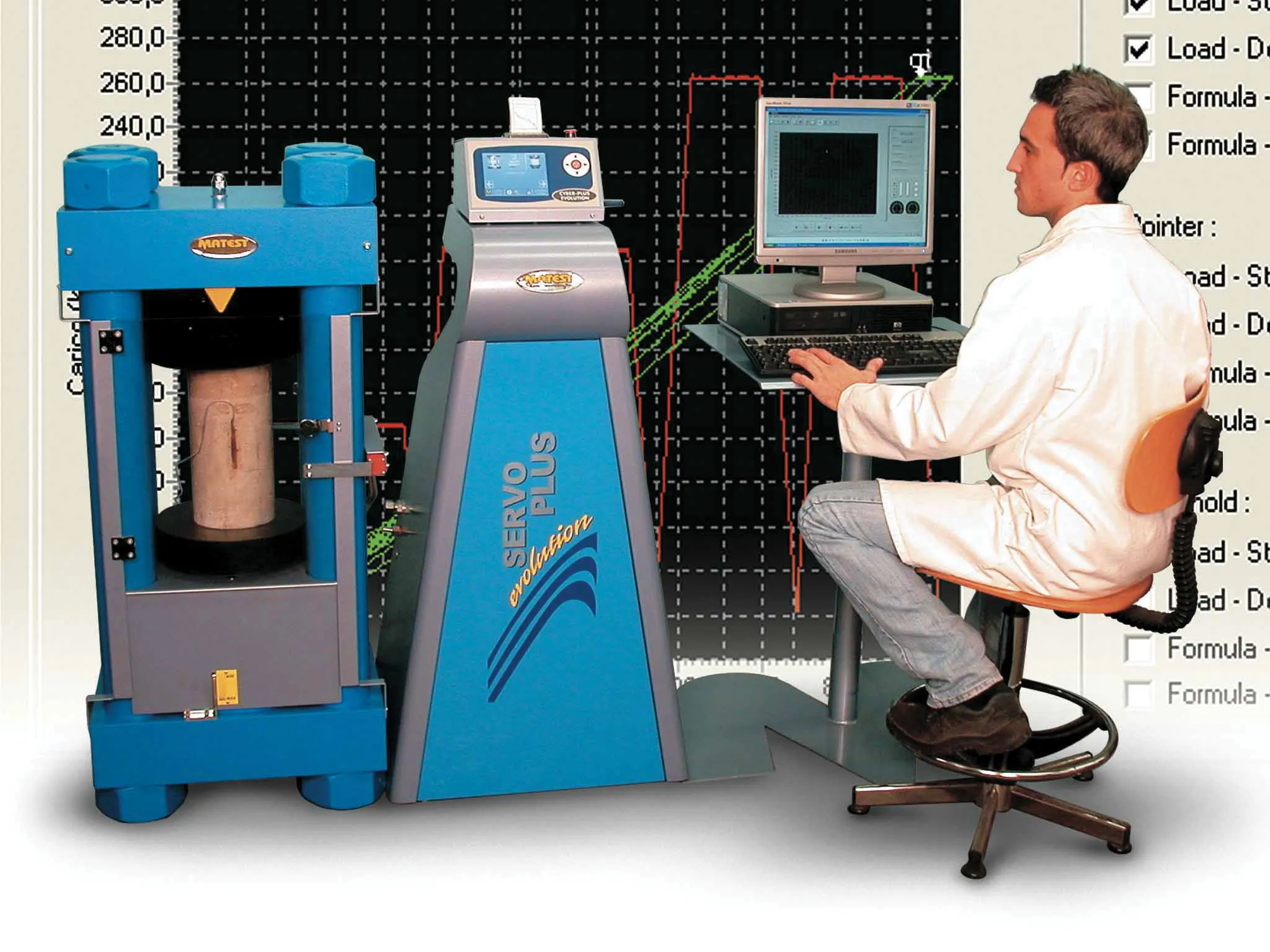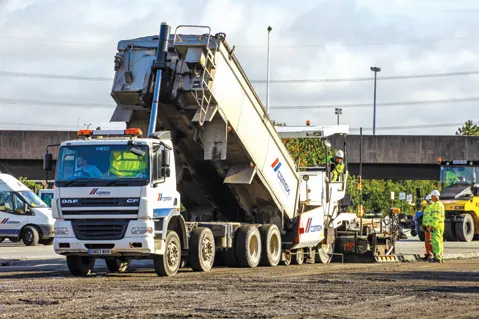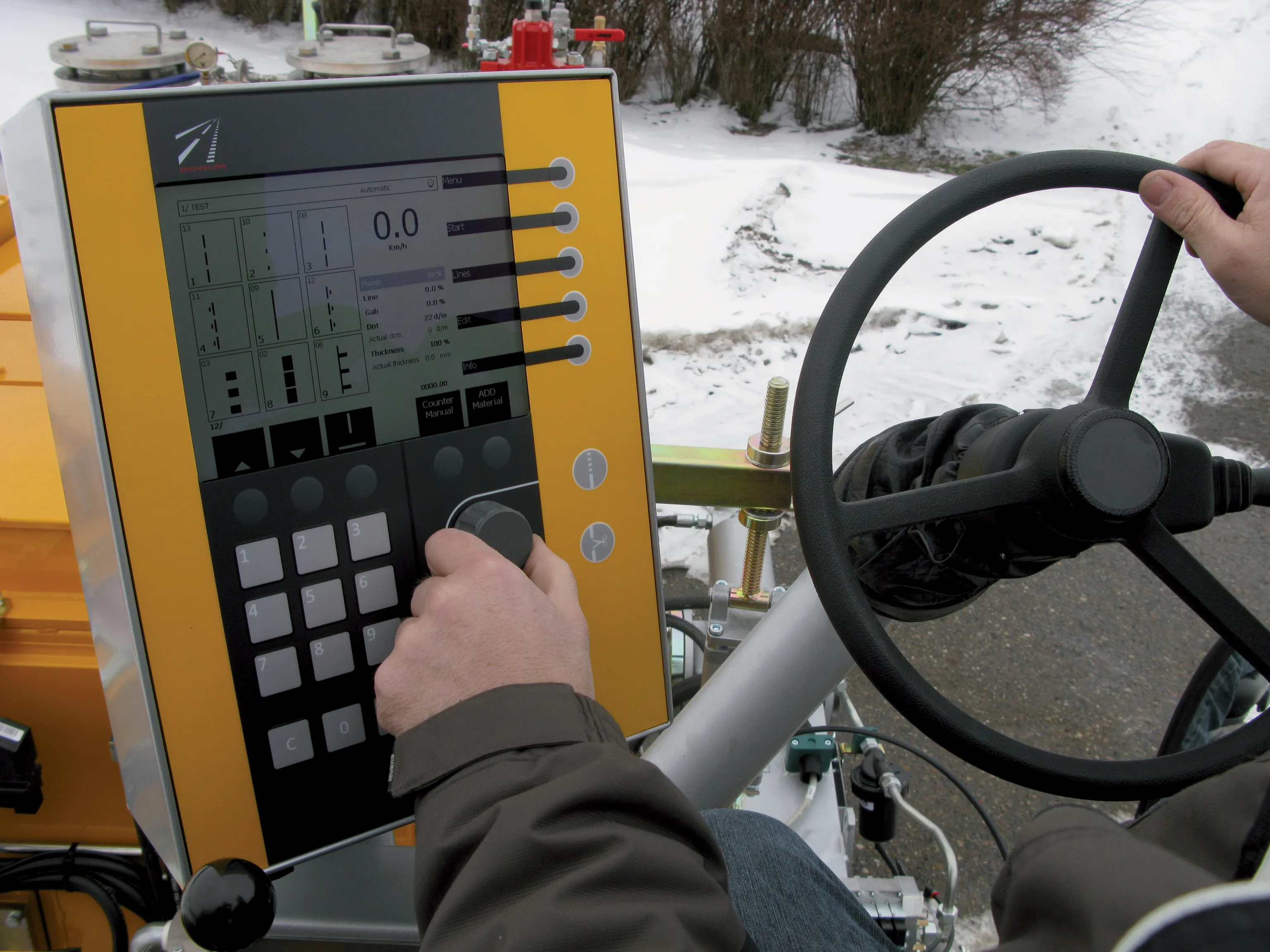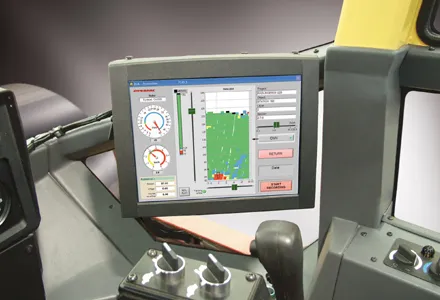Quicker, better, more cost effective materials testing - Kristina Smith writes. Most developments in materials testing technology involve updating and upgrading existing machines, either to meet changes to standards or to satisfy new needs in the market. And occasionally, a manufacturer will come up with something completely new. PUMA - the precision unbound materials analyser - falls into the latter category. It has been developed by Cooper Research Technology and Nottingham Transportation Engineering Cen
April 10, 2012
Read time: 10 mins

Quicker, better, more cost effective materials testing - Kristina Smith writes
Most developments in materials testing technology involve updating and upgrading existing machines, either to meet changes to standards or to satisfy new needs in the market. And occasionally, a manufacturer will come up with something completely new.PUMA - the precision unbound materials analyser - falls into the latter category. It has been developed by Cooper Research Technology and Nottingham Transportation Engineering Centre (NTEC) at
PUMA measures the stiffness modulus and Poisson's ratio of unbound material under different stress conditions, directly replacing current methods which are cumbersome and time-consuming. The test also gives a measure of rate of increase of permanent deformation, which can be directly related to design against rutting, applicable to relatively thinly surfaced roads.
Although developing machines from scratch is costly, Cooper's strategy is to look for opportunities at the cutting edge of this field and to operate in niche markets, said Cooper's managing director Peter Grafton. The firm maintains close links with leading academics and universities around the world.
"As people develop their understanding of asphalt, then new tests are designed and equipment then needs to be developed to meet the new requirement," said Grafton. "It takes a lot of time, effort and investment to get from what the researcher has discovered to a test that can be put in a lab and turned round quickly." Designed as a direct equivalent to the Springbox, PUMA has the advantage that initial stress conditions can be accurately controlled, says Cooper. It is a simple test, suited to generic specification, which the developers believe could lead to increased confidence in pavement foundation design because it can accurately measure the properties of unbound materials such as stabilised soils or cold-mix asphalt.
The PUMA tests a 150mm diameter by 150mm high specimen which is held by bottom and upper steel platens and eight steel wall segments. The wall segments are elastically constrained by an adjustable rubber and steel 'band' arrangement which allow the start conditions of the test to be set to a level corresponding to the depth at which the material will be used below the pavement.
Repeated vertical load is applied through the top platen. The stiffness and thickness of the rubber element allow a build-up of horizontal stress to develop under repeated load - as would occur in reality under traffic - allowing in-situ stress conditions to be closely reproduced.
Two vertical linear variable differential transformers (LVDTs) measure vertical strain, a strain gauge on the face of the steel band allow horizontal stress and strain to be calculated with the stiffness modulus and Poisson's ratio calculated automatically throughout the test.
PUMA can be used on all unbound materials with particle size up to 31.5mm, arguably larger than this if broadly graded, said Cooper. Trials are also in progress on its use for testing cold-mix asphalt. It is expected that the equipment will also be suitable for tests on hydraulically bound materials up to a certain strength, although the appropriate strength limit is yet to be determined. Recently it has started to set up strategic alliances with other manufacturers, using its network of agents to distribute other firms' machines.
The first two such alliances see Cooper teaming up with US firm OEM and UK manufacturer Wessex Test Equipment.
Cooper will be distributing OEM's Thermal Stress Restrained Specimen Test (TSRST) which tests the susceptibility of asphalt to cracking at low temperatures. The TSRST was developed by Oregon State University, which is close to where OEM is located, and meets the requirements of the original AASHTO Preliminary Specification TP10 and forthcoming European standard prEN 12697-46.
With Wessex Test Equipment, Cooper will be supplying products under the Cooper Wessex brand. The first major launch from Cooper Wessex is a new digital pendulum machine for skid testing. Benefits of the new instrument include ease of use and time stamping of the results.
Looking ahead, Cooper plans to link up with other UK manufacturers of materials testing machines who can benefit from its established channels around the world.
Klaruw
Retexturing specialist
"I was carrying out tests with the laser texture tester on the M56 in the UK at the same time as an engineer working for the
The laser texture tester is far easier to operate: just place it on the road surface. It uses a rotating high resolution laser to scan circular tracks of pavement, scanning 2000 points across a 400mm circumference.
The tester displays and stores MPD (Mean Profile Depth) in accordance with DIN EN ISO 13473/1 based upon one quarter of the circular track (100 mm). It also displays and stores ETD (Estimated Texture Depth) to DIN EN ISO 13473/1, comparable with MTD calculated using the sand patch method (
Apart from its ease of use, and the fact that it does not require an experienced operator as the sand test and grease smear tests do, the laser texture tester can provide and present results in a fraction of the time. Data can be copied to a laptop or PC for integration and presentation within reports and other documentation.
"Within a minute you have got a complete reading and the reading is stored. I can transfer these readings onto a computer, make a report, produce graphs showing how profile is looking, see whether the surface is grooved or porous," said Vrancken. "None of this can be done with the sand patch. It takes much more time to get one measurement done. And to get the results into a report, somebody has to calculate the figures and then enter them into a PC. This saves a lot of time." Having the right macro-texture is important because it allows water to drain away from the area where the tyre makes contact with a road surface's very top surface, the microtexture, which creates friction. Data from the laser texture tester can be used to demonstrate that a road's macrotexture needs to be improved and then can be used post-treatment to assess how effective retexturing work has been.
Laser technology for measuring macrotexture has been under development in Japan for 15 years said Vrancken. However, it is only recently that lasers have become affordable. Klaruw has invested in a Germanmanufactured machine which is currently undergoing calibration to ASTM International Standards.
"Lasers will definitely push the sand patch out of the market because they are much more practical," predicted Vrancken.
AUSTRACK is the only commercially available EN12697-22 extra-large wheel tracker on the market. It exceeds the specification for extra-large and large wheel tracking to EN12697-22 and exceeds the specification for extra-large and large roller compaction to EN12697-33.
The sectional moulds enable pavement engineers to test specimens with thicknesses up to 300mm on 700mm x 500mm specimens (extra large) and 200mm thick on 500mm x 180mm specimens (large). Fold out tracks and a roller mounted mould carrier, allow access for materials handling equipment as the test specimens are very heavy.
The 300mm specimen depth allows testing of full depth constructions of unsealed unbound pavements, chip sealed pavements and asphalt pavements. For asphalt testing the insulated heated enclosure allows wheel tracking to be performed at temperatures up to 60°C.
The extra-large and large wheel tracking are performed using large diameter (550mm and 400mm) wheels with pneumatic tyres, allowing almost full scale wheel tracking performance tests on asphalt and unbound granular material.
The rut depth measurement system, an automated non-contact laser, can be programmed to take laser readings after a given number of cycles. That means that AUSTRACK can be left to run unmanned with the wheel tracker stopping periodically for the automated rut depth measurements.
Laser rut depth measurements can be taken at multiple points across the specimen and multiple points along the specimen length. This gives a matrix of measurements over the specimen to allow detailed materials performance analysis.
A low power consumption pneumatic actuator applies axial loads of up to 30kN, digitally servo controlled with
The Cyber-Plus Evolution is a touch screen control unit, which can be used to upgrade any compression or flexural machine, even if manufactured by other companies. It works like a PC on Windows Embedded Operating System, providing a user-friendly interface, with a full range of functions for the management and visualization of data, pictures and graphics.
Designed for semi-automatic tests, the Cyber-Plus Evolution has internet and intranet connections for remote technical assistance and allows test data to be saved on external memories through two USB ports and an SD card slot.
When hooked up with a multi-piston electric pump - with variable flow, driven by a microprocessor -the Cyber-Plus Evolution becomes the Servo-Plus Evolution, allowing full automatic tests. This set-up can be used for applications including flexure tests on concrete/mortar and tensile splitting tests on concrete cubes and cylinders (the pace rate is automatically controlled by the digital unit).
Servo-Plus Evolution can also be used for more sophisticated applications such as elastic modulus tests on concrete and rocks; strain, ductility and post-breaking behaviour; and deflection of fibre reinforced concrete beams.
CONTROLS As pavement designers around the world strive for longer lives and better durability, testing machine manufacturers must also rise to the challenge. "Although the on-going economical crisis in almost all western economies is preventing the launch of major investments in new infrastructures, there is an increasing demand for better quality control on new civil engineering projects in order to achieve a longer durability of the infrastructure," said Flavio Galli, CONTROLS' commercial director.
CONTROLS has just launched GYROCOMP, the third generation of gyratory compactors.
These machines offer the added benefits over previous generations of a new touchscreen integrated display, ergonomic interface and front sliding door, combined with the new data elaboration software included in the machine. Gyratory compaction method is now the reference method for compactability properties both to EN and AASHTO standards and GYROCOMP can be easily adapted both to the EN and AASHTO internal angle.
Its user-friendly interface, and the fact that it does not need a PC, means that GYROCOMP is suitable for on-site laboratories, said CONTROLS' product manager Andrea Carlessi.
Tests can be saved in the large internal memory and, when needed, the machine can be connected to a PC, tests downloaded and processed with the GYROCOMP software, including single test elaboration, multiple test elaboration and Mix Design guided procedure.
The new transparent heavy-duty sliding door allows to user to monitor the test process with full safety, and the new electro-mechanical extruder allows for a high frequency of tests, since one mould can be inserted in the machine while the last one is extruded.
Despite the tough economic climate, Galli predicts a bright future for the materials testing sector. "The standardisation institutions in Europe and the USA are constantly introducing new testing procedures and improving existing ones as new technologies in equipment and materials emerge," said Galli. "This combined with the fact that public sector clients demand more value for money, means that future trends cannot be anything but positive."









